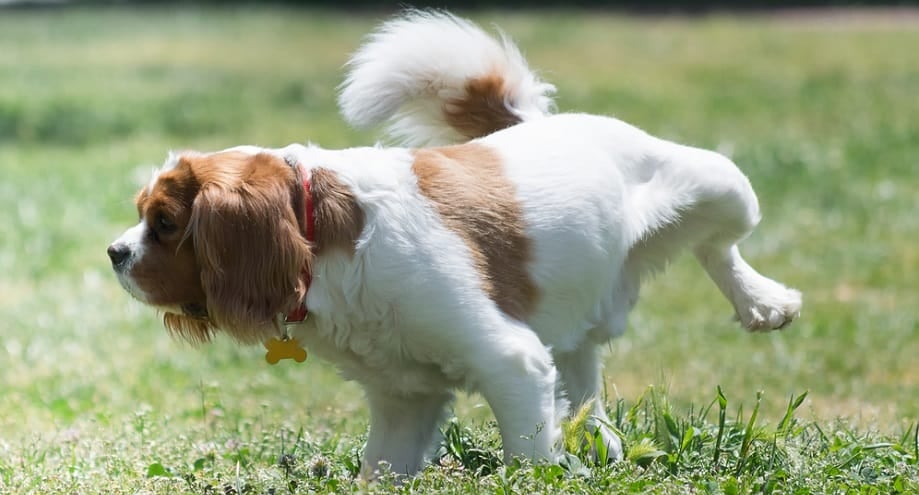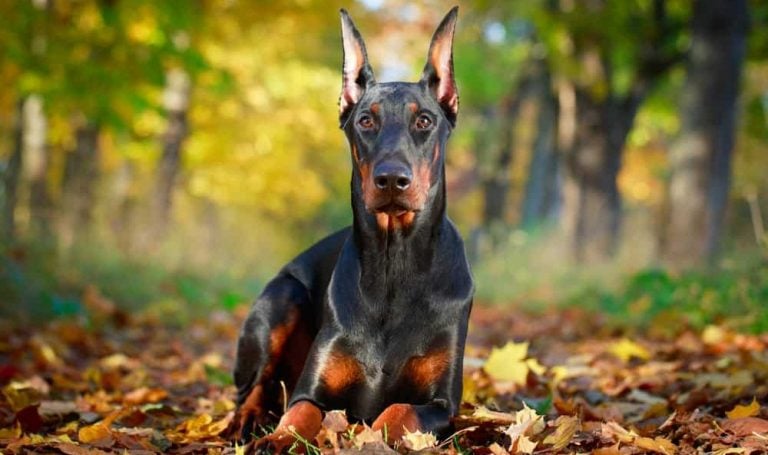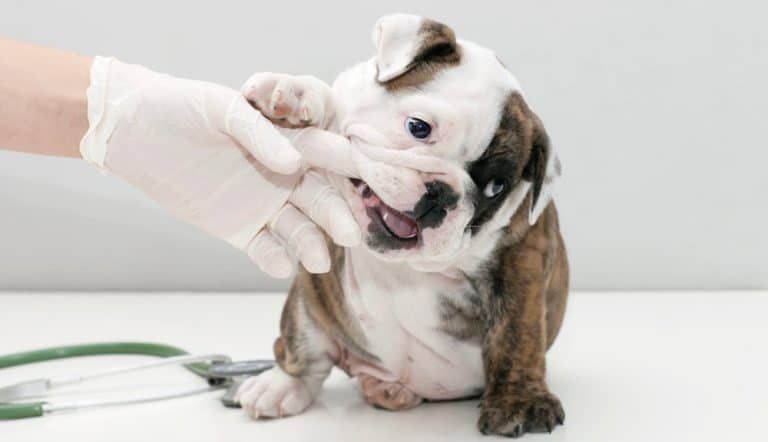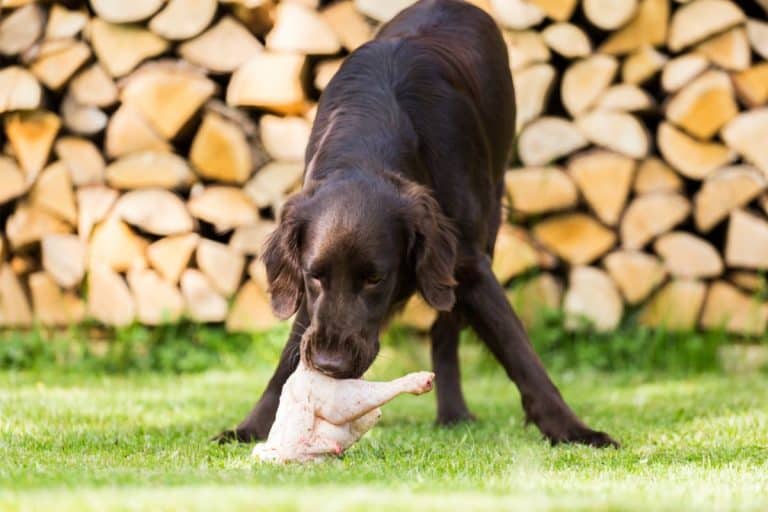Dog Urine Color Chart – What Does Your Dog’s Urine Color Mean?
The reason why dogs urinate is to satisfy their physiological needs as well as for communicative purposes because your dog’s urine can tell you a lot about their health.
Looking at our dog urine color chart will help you recognize any early signs of trouble.
Your dog’s urine can come in different colors depending on certain factors such as what they are eating, how much they drink, or whether they are suffering from an illness.
Knowing the color of your dog’s urine when they are healthy will provide you with a good parameter to compare when the color changes.
This article will provide you with more information on the different colors of your dog’s urine and when to visit the vet for a medical examination.
What Is A Normal Dog Urine Color?

Transparent yellow is the normal color of your dog’s urine. The transparent yellow color is caused by a ‘plasma urochrome’ which is a pigmented substance produced constantly and excreted by your dog’s kidneys.
The concentration of this substance depends on how much your dog drinks.
If your dog drinks plenty of water, their urine volume will double leading to dilution making the yellow color fade. However, if your dog drinks less water, the urine will be more concentrated making yellow darker.
Therefore, a dog’s urine can range from light yellow, yellow, to amber.
Dog Urine Color Chart
| Color | Causes | What To Do |
|---|---|---|
| Pale Yellow | Healthy | Nothing |
| Transparent | Over-hydration, Kidney failure, Urinary Tract Infection | Monitor / See A Vet |
| Dark Yellow | Dehydratation | Make Sure Your Dog Gets Enough Water |
| Red/Pink | Urinary Tract Infection, Inflammation, Kidney Problems | See A Vet |
| Brown | Toxin Exposure, Internal Bleeding, Muscle Inflamation | See A Vet |
| Dark Yellow/Green | Kidney Problems, Bladder Infection | See A Vet |
Pale Yellow Dog Urine Color
If the color of your dog’s urine is pale yellow, it means that they are not suffering from any illness, and they are well hydrated.
However, you should keep an eye on the consistency of the pale-yellow color to ensure that it doesn’t often change to a clear or dark yellow color by monitoring the water intake and urine frequency. If the change increases, contact your vet.
Transparent Dog Urine Color
While abnormal colors in dog urine are concerning, a transparent color which is almost like water is also a concern.
Another warning is urine that does not have any smell, produced in large amounts, and that it is difficult for the dog to hold.
Transparent urine means that the dog is drinking a lot (polydipsia) and urinating a lot (polyuria).
This can be caused by health conditions such as liver disease, kidney failure, urinary tract infection, diabetes, Addison’s disease, and Cushing’s disease. Transparent urine in dogs is not normal and should check by a vet.
Dark Yellow Dog Urine Color
If your dog’s urine is dark yellow, it shows that they are dehydrated. Dehydration can happen to your dog due to an illness that shows signs of diarrhea, lack of appetite, and vomiting.
Ensure that your dog is getting enough clean and fresh water to hydrate. If your dog shows other clinical signs and does not want to drink the water, seek your vet’s advice immediately as your dog could be suffering from an underlying health condition.
Red/Pink Dog Urine Color
Sometimes, your dog’s urine may have red blood (hematuria) in it or assume a pinkish tint. The red/pink color in the urine means that your dog may be suffering from urinary tract infection, inflammation of the bladder, kidney problems, crystals in the urine, or bladder stones.
What a dog eats can cause a reddish tint in the urine. For example, betacyanin in beetroots can lead to red urine in your dog if they consume it.
However, eating beetroot should not show any other symptoms apart from a reddish tint and the urine should return to the normal color within 12 to 24 hours.
If your dog’s urine has blood or is pink, the best thing to do is to take them to the vet and bring along the urine sample for urinalysis.
Brown Dog Urine Color
When your dog’s urine is color brown, it resembles the color of tea and can be caused by certain factors. Dehydration can cause the dog’s urine to be brown but once the dog drinks more the color goes back to normal.
Brown color can also be due to severe dehydration caused by intravenous fluids administered by the vet.
However, in serious cases, the brown color can be a sign of damage in red blood cells where the hemoglobin is released.
This can happen if the dog is exposed to toxins. Brown color can also be due to the presence of bilirubin caused by liver issues.
Dark urine can occur if the dog is experiencing muscle inflammation and damage (rhabdomyolysis) where the muscles produce protein myoglobin. The damage in muscles can be caused by strenuous exercise or crush trauma.
Dark Yellow/Green Dog Urine Color
If the color of the dog’s urine is green, it is time to visit the vet. This is because your dog could be having trouble with his kidneys. This may be caused by eating too much wild grass, but you should not assume it.
Old blood can also lead to the brown color in your dog’s urine. Old blood can be caused by past bladder stones, kidney infections, tumors, or bladder infections.
Why Is My Dog Having Trouble Peeing?

If your dog is straining or struggling when peeing, it could be a serious health condition that needs immediate attention.
Both female and male dogs have blockages in the urethra (tube connecting the outside world to the bladder) due to the presence of scaring, urinary stones, tumors, or inflammation.
The urethral blockage in male dogs can be caused by an overly enlarged prostate especially for those dogs that have not been neutered because testosterone influence the growth of the prostate.
If your dog is having trouble peeing, it is advised that you take the side of caution and take them to the vet for evaluation. Even though there are no blockages, it is safe to get your dog checked out.
How To Collect & Check Your Dog’s Urine?
The natural way of collecting a dog’s urine is using the ‘free catch’ method where a large soup ladle collects the urine as the dog urinates. The urine is then transferred to a urine tube or sample jar.
This is not a sterile sample because even if the ladle is clean, the urine has passed through the urethra and since the vulva or penis of a dog cannot be cleaned, it can be contaminated by bacteria not associated with the bladder infection.
Another way to collect the urine is getting it directly from the bladder, a process known as cystocentesis. This is done with the help of an ultrasound to ensure that the urine sample is sterile.
If the urine sample has bacteria, it shows that there is an infection in the bladder. Urine culture and sensitivity can tell the type of bacteria and the antibiotics that work well to treat the infection.
My Dog’s Urine Smells Like:

Fish
If your dog’s urine has a fishy odor, it is a big indication that they are suffering from a urinary tract infection.
A fishy smell in urine may not be the only symptom of UTI, other signs include your dog having difficulty urinating, has dark or cloudy urine and your dog needs to go out frequently.
UTI can be smelly for you but very uncomfortable for your dog, therefore, when you notice these symptoms, you should take your dog to the vet.
If left untreated, the infection can move to the kidneys or the bladder. Your vet will do a urinalysis and if your dog has UTI, the vet will administer antibiotics to clear the infection.
Ammonia
If your dog’s urine smells like a strong, chemical-like odor, the main reason is the presence of a waste product in the urine. There are certain reasons why your dog’s urine smells like ammonia. It can be medical, dietary, or lifestyle.
Dehydration can cause the ammonia smell in the urine. If your dog is not drinking enough, the waste products will be highly concentrated in the urine.
Medical issues such as urinary tract infection and kidney failure can cause the urine to smell like ammonia.
Certain foods can lead to an ammonia-like smell. The smell develops if you have recently changed your dog’s diet or introduced foods such as fish and asparagus which are known to make urine have a funny smell.
Sweet
When your dog’s urine smells sweet, it means you are smelling glucose. When the glucose levels in your dog’s blood are high, it spills into pees.
The main cause of high glucose levels is diabetes and doing a urine test can confirm whether it is the cause or not.
You should also know that dogs with diabetes get infections more often, make it possible for high sugars to be combines with UTI. Therefore, the need to take your dog to the vet.
Chicken Broth
Your dog’s urine can smell like chicken broth though it may sound crazy. The chicken broth smell is a sign of urinary tract infection.
UTI is a common sign of a sudden change in the odor of urine. This is your cue to take the dog to the vet and antibiotics will banish the smell and clear up the infection.
What If My Dog Pees Too Much/Too Often?
Increased urine volume can be normal for your dog if they have been drinking a lot due to increased exercise or weather, or if they are pregnant, or you have added water or canned food to their meals.
If the volume of your dog’s urine goes on for more than a day and is not due to the normal reasons above, then it is time to take them to the vet for an examination.
Some medical conditions that may make your dog pee too much include liver failure, kidney failure, uterine infection, heart disease, Addison’s disease, Cushing’s disease, brain tumors, or diabetes.
If your dog pees too often, it is likely that they have inflammation or/infection in their urinary tract. In most cases, the increased frequency is accompanied by smaller volumes of pee.
This is because your dog is uncomfortable with the presence of urine within an infected or inflamed bladder. Any delays in visiting the vet will prolong the discomfort your dog is feeling.
Dogs & Excessive Licking Of Genitalia After Urination
For dogs, a little post-piddling ‘clean-up’ is normal, but excessive licking of the genitalia throughout the day or after urination should be examined by the vet. Some of the reasons that may be making your dog excessively lick their genitalia are:
- Trauma of the genitalia.
- Urinary tract infection.
- Perivulvar infection.
- Constant urine incontinence or dribbling.
- A foreign body such as foxtails.
- Preputial entrapment.
When visiting the vet to get your dog’s peeing issue evaluated, ensure that their bladder is full by not allowing them to pee a few hours before the examination.
How To Get My Dog Drink More Water?
The following are the ways that you can convince your dog to drink more water:
- Exercise your dog so that they can be thirsty and drink water.
- Instead of a bowl of water, give them ice cubes to suck on.
- Try giving them water in a different bowl and ensure that the material used to make the bowl does not cause allergic reactions in your dog.
- Add water to your dog’s kibble or something else which is moist such as canned food.
- Put some fruits in the water bowl and ensure they are dog-friendly such as berries.
- Switch your dog’s water with a liquid that has a tempting taste or scent such as Gatorade or chicken broth.
- If all the above does not work, take a syringe from your vet, and put the water directly into their mouth using it.
Final Words
Urine is an important part of the life of your dog, and sometimes this can be disregarded. Pee is how dogs mark their territory, communicate with each other, and it can tell you if they are under the weather.
Don’t think of dog pee as a function in the body that your need to tolerate especially when they want to go outside but it is raining.
Urine can tell you whether your dog is healthy and happy or suffering from an illness through the different colors. If you notice any changes in behavior and color related to your dog’s urine, you should book an appointment with the vet immediately.






